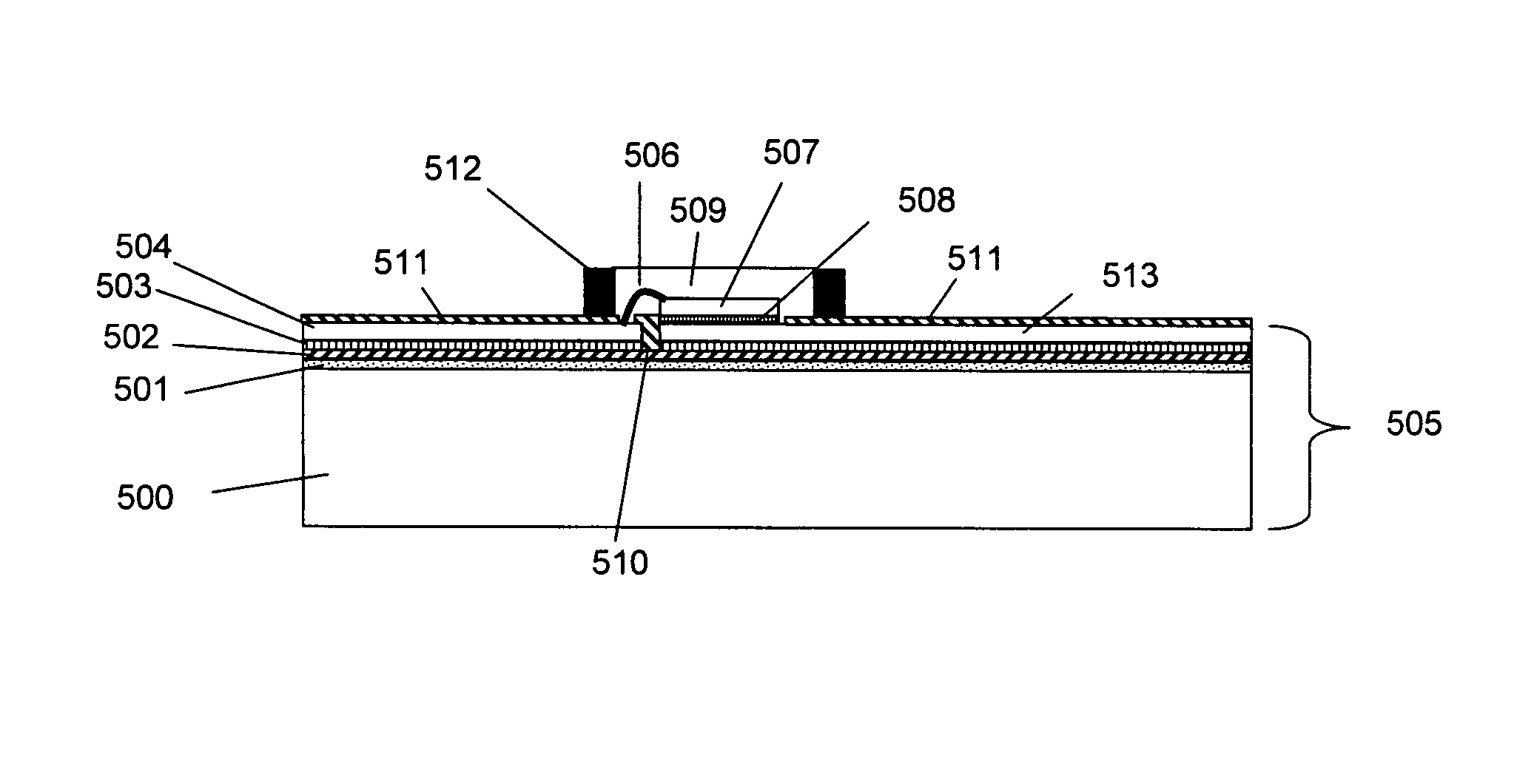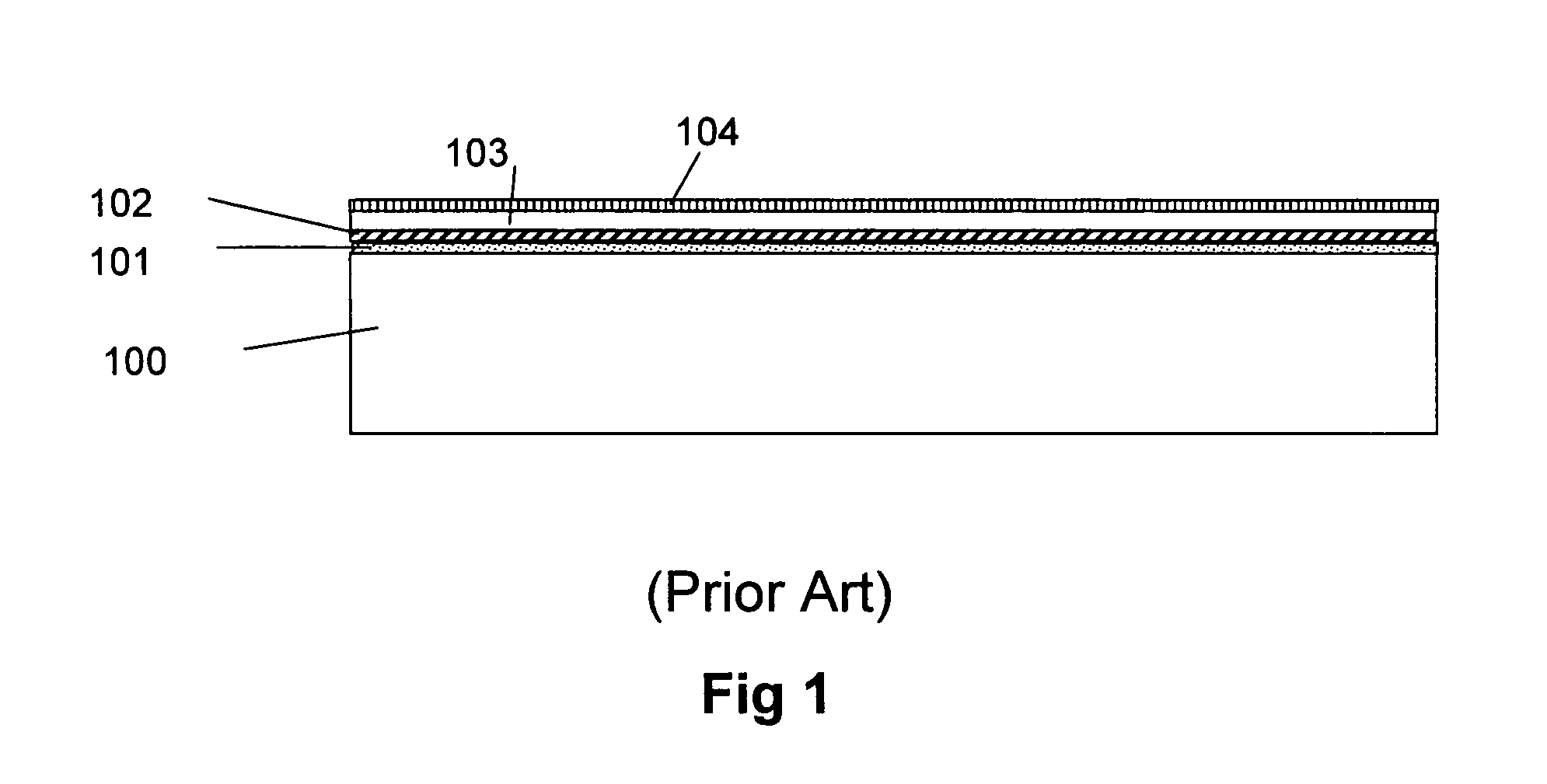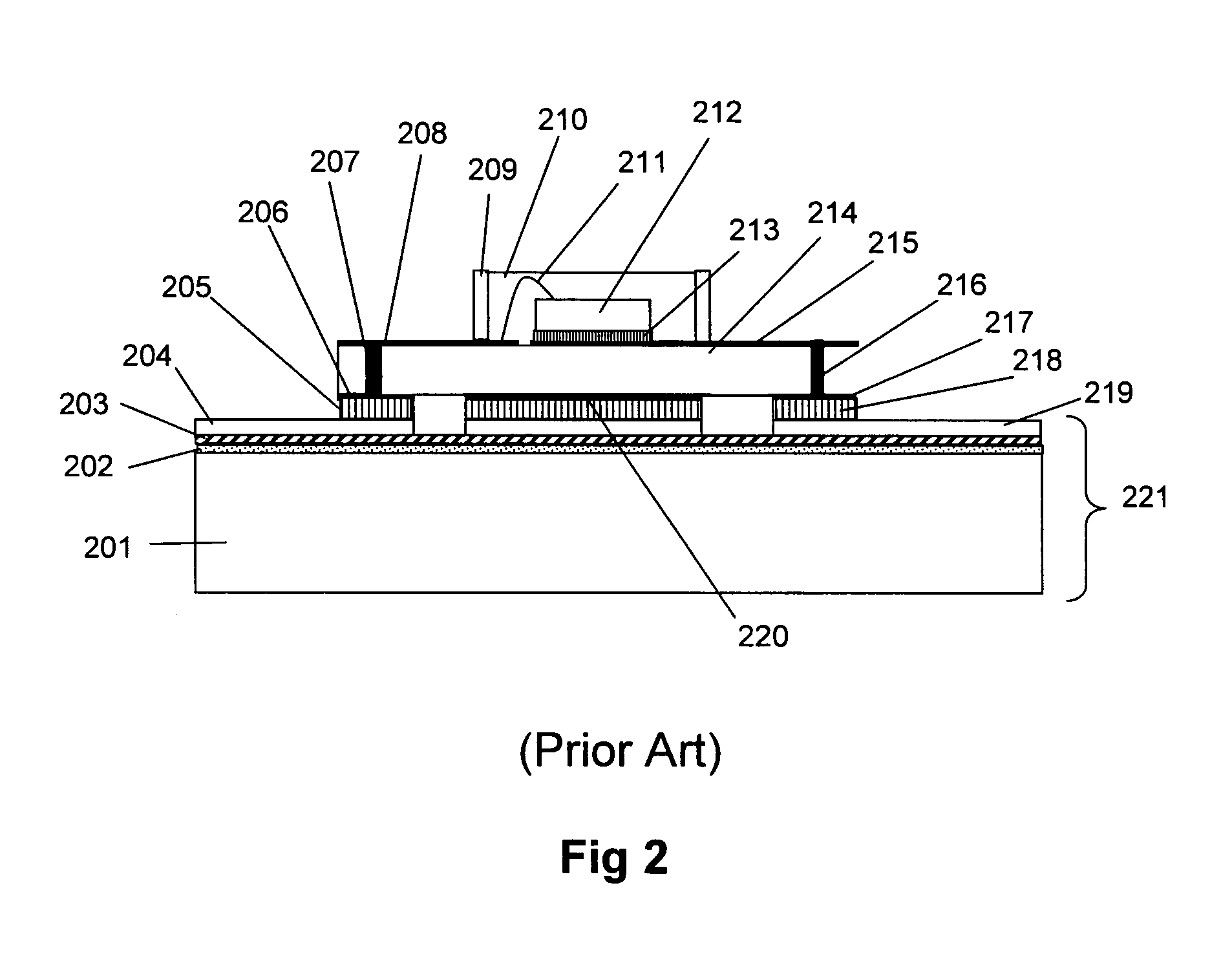High thermal performance packaging for optoelectronics devices
a technology of optoelectronics and thermal performance, applied in the direction of ion implantation coating, printed circuit aspects, electric discharge heating, etc., can solve the problems of high junction temperature, local heating effect, high power density generated inside the material, etc., to achieve maximum efficiency, high power injection, and the effect of long li
- Summary
- Abstract
- Description
- Claims
- Application Information
AI Technical Summary
Benefits of technology
Problems solved by technology
Method used
Image
Examples
Embodiment Construction
[0051]The thermal conductivity of a material can be defined as follows:
[0052]k=Qt×LA×ΔT(1)
where Q is the quantity of heat transmitted in time t through a thickness L in a direction normal to a surface of area A, due to a temperature difference ΔT, under steady state conditions and when the heat transfer is dependent only on the temperature gradient.
[0053]In order to reduce the temperature difference across a defined region in a submount a material with a higher thermal conductivity can be employed, additionally a thinner material may also be implemented. However, care has to taken that reducing the thickness still maintains good electrical insulation and maintains high electrical breakdown voltages. Table 1 contains a list of thermal conductivities for common materials used in semiconductors, light emitting devices, and LED packaging.
[0054]
TABLE 1ThermalConductivityCTE (10−6 / K)MaterialW / (m · K)@ 20° C.Alumina186.9Aluminum Nitride1704.7AuSn solder5716Copper40017Aluminium23724Tungst...
PUM
| Property | Measurement | Unit |
|---|---|---|
| thermal conductivity | aaaaa | aaaaa |
| electrical breakdown voltage | aaaaa | aaaaa |
| thickness | aaaaa | aaaaa |
Abstract
Description
Claims
Application Information
 Login to View More
Login to View More - R&D
- Intellectual Property
- Life Sciences
- Materials
- Tech Scout
- Unparalleled Data Quality
- Higher Quality Content
- 60% Fewer Hallucinations
Browse by: Latest US Patents, China's latest patents, Technical Efficacy Thesaurus, Application Domain, Technology Topic, Popular Technical Reports.
© 2025 PatSnap. All rights reserved.Legal|Privacy policy|Modern Slavery Act Transparency Statement|Sitemap|About US| Contact US: help@patsnap.com



